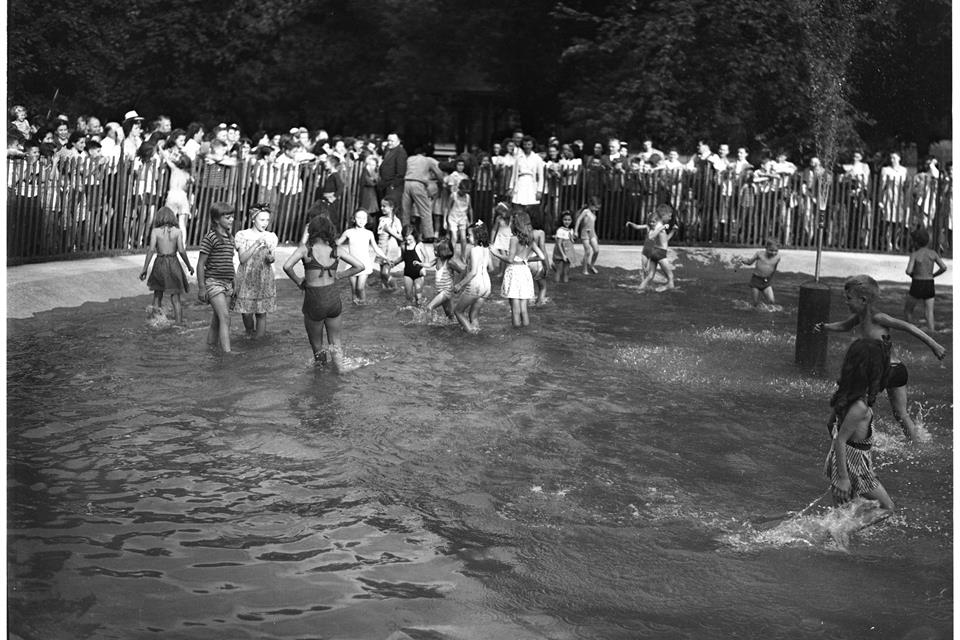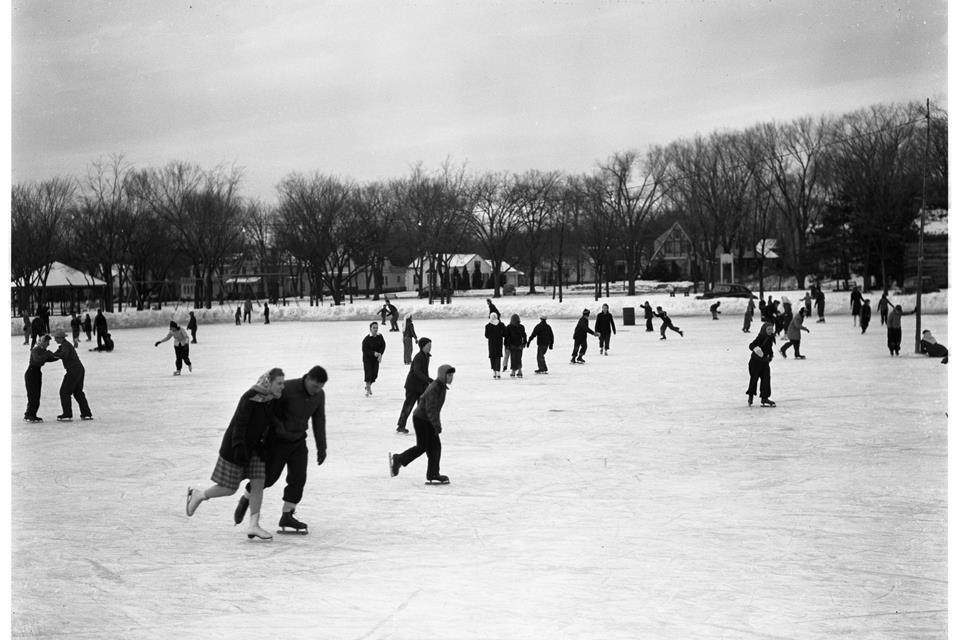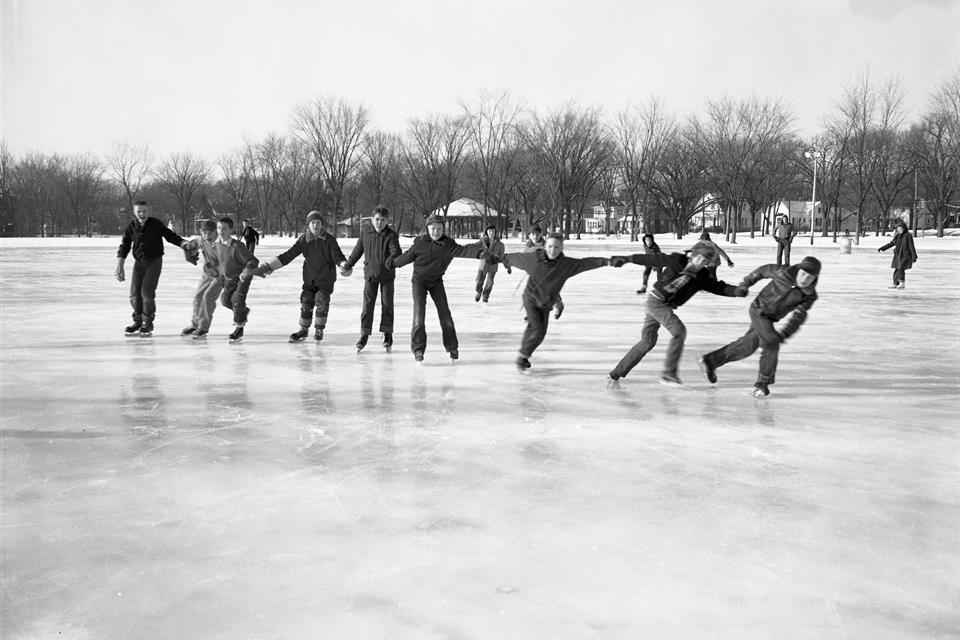History
Ann Arbor's city parks sit on the ancestral and traditional homelands of several indigenous Native peoples. Read a
land acknowledgement from the city and learn more about the early history of the land
here.
In the late 1800's, the land that now comprises Burns Park was home to a ½ mile horse track, hosted by the Ann Arbor Driving Club until 1920. The oval of elm trees were planted on the horse track to provide shade to visitors. From 1890 - 1910, the area hosted the County fairgrounds and the trolley car barns. The trolley system's car barns for the Ann Arbor Street Railway were located between Lincoln and Olivia Streets from 1894 - 1925. A 'spectacular' fire destroyed the car barns, contributing to the end of the trolley era, already jeopardized by the increased number of automobiles.
Burns Park was purchased by the city in 1910 and named after botany professor George Burns, who pioneered the Ann Arbor parks system as well as Nichols Arboretum. The Warming Hut is located in the approximate spot of an 1800's log cabin; as it started to disintegrate, it was dismantled, and parts were saved by the city.
In 1921, the four acres of land on the western edge of the park were sold to the Ann Arbor Public schools. Construction on Tappan Junior High School began in 1923. The first students started here on February 2, 1925. In 1951 the historic building was rededicated to Burns Park Elementary School as Tappan moved into their new location on East Stadium Boulevard.

Neighborhood Children Enjoy The Opening Of The Burns Park Wading Pool, July 1944

Ice Skating at Burns Park, 1947

Skaters Play "Crack the Whip" at Burns Park Ice Rink, 1954
